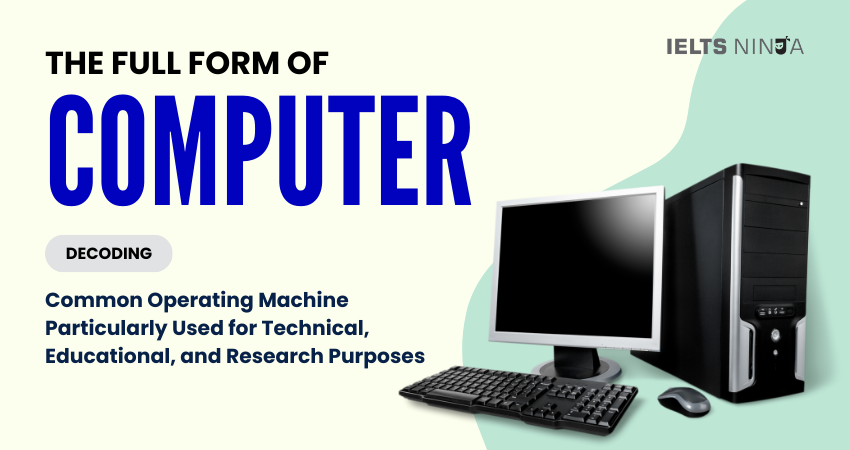The full form of COMPUTER stands for “Common Operating Machine Particularly Used for Technical, Educational, and Research Purposes”, it is a complex electronic device designed to perform various tasks by processing and manipulating data. It is a versatile machine used for a wide range of applications, including data processing, calculations, communication, and entertainment. Here are key details about computers:
Key Details about Computers:
History of Computer:
- The concept of a computer dates back to ancient civilizations that used simple devices for calculations.
- The modern electronic computer was developed in the mid-20th century, with early pioneers like Alan Turing and John von Neumann contributing to the theoretical foundations.
Types of Computers:
Computers can be categorized into several types based on their size, purpose, and capabilities:
- Personal Computers (PCs): These are designed for individual use and include desktop computers and laptops.
- Servers: Used for hosting websites, applications, and data storage in network environments.
- Mainframes: Powerful computers used by large organizations for data processing and complex calculations.
- Supercomputers: High-performance machines used for scientific research, simulations, and weather forecasting.
- Embedded Computers: Found in various devices, from smartphones and appliances to cars and industrial machinery.
Components of Computers:
A computer consists of several essential components, including:
- Central Processing Unit (CPU): The “brain” of the computer that executes instructions and performs calculations.
- Memory (RAM): Temporary storage used for running programs and storing data in use.
- Storage Devices: Hard drives, solid-state drives (SSDs), and optical drives for long-term data storage.
- Input Devices: Keyboards, mice, and touchscreens for user interaction.
- Output Devices: Monitors, printers, and speakers for displaying information.
- Motherboard: The main circuit board that connects and controls all components.
- Operating System (OS): Software that manages hardware and allows users to run applications.
Computer’s Software:
- Operating System (OS): Software that manages hardware resources, provides user interfaces, and runs applications. Examples include Windows, macOS, and Linux.
- Applications: Software programs that perform specific tasks, such as word processing, web browsing, and graphic design.
- Programming Languages: Used to write software code for creating custom applications and automating tasks.
Also Read: Best online IELTS coaching & training academy
Functions and Uses of Computer:
- Data Processing: Computers are used for data analysis, calculations, and record-keeping in various fields, including finance, science, and engineering.
- Communication: They enable email, instant messaging, video conferencing, and internet browsing.
- Entertainment: Computers are used for gaming, streaming movies and music, and creating digital art and content.
- Education: Computers are essential tools in classrooms and online learning platforms.
- Business and Commerce: They facilitate e-commerce, inventory management, and business operations.
- Research and Development: Computers are crucial in scientific research, simulations, and product design.
Computer’s Networking and the Internet:
- Computers are interconnected through networks, including the internet, enabling communication and sharing of resources.
- The World Wide Web (WWW) is a vast system of interconnected websites and web services accessible through web browsers.
Advancements in Computer:
- Moore’s Law states that the processing power of computers roughly doubles every two years, leading to continuous advancements in computing technology.
- Emerging technologies like quantum computing and artificial intelligence are shaping the future of computing.
Impact on Society through Computer:
- Computers have revolutionized industries, transformed communication, and accelerated scientific discoveries.
- They have also raised concerns about privacy, security, and digital divides.
Conclusion:
Computers, short for “Common Operating Machine Particularly Used for Technical, Educational, and Research Purposes,” have become an integral part of modern life. They have evolved from room-sized machines to portable devices that empower individuals and organizations to perform a wide range of tasks, from data processing to entertainment and research. The ever-advancing field of computing continues to shape and redefine how we live and work in the digital age.








